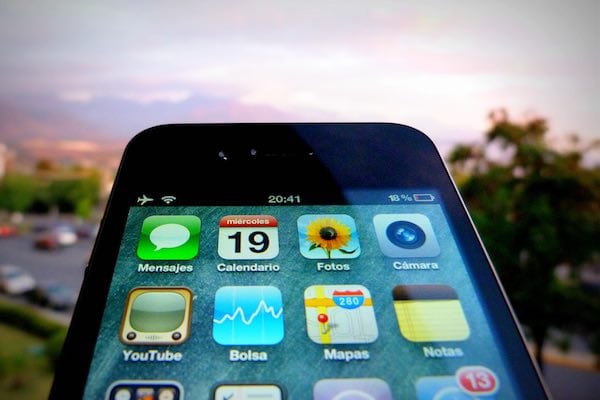
[Image above] Credit: Gonzalo Baeza; Flickr CC BY 2.0
We’ve said it before, and we’ll say it again—these days, we’re living in the Glass Age.
But because we love the material so much, it’s entirely possible that we are biased. So it’s always nice to get confirmation from a less materially-biased source.
An article recently published in The Economist science and technology section takes on a technology that most people look at everyday, yet hardly ever notice—glass.
As a material, glass’s clarity hides its everyday importance. Glass enables some of the most important technologies in our everyday lives. It composes touchscreens of the smartphones we can’t live without, and it provides visibility in the vehicles we rely upon to shuttle us around and the buildings that we spend so much of our time confined within.
Once you start seeing it, glass really is everywhere. So it’s exciting to see that The Economist article is doing its part to bring glass to the forefront of readers’ vision.
The article specifically details Corning Gorilla Glass, highlighting the product’s revival from the dusty Corning Inc. archives to meet the needs of Apple founder Steve Jobs. The extra-strong Gorilla Glass that we know today was developed at the 2006 request of Jobs, who was searching for a clear, tough, and scratch-resistant glass for the cover screen of the then-new iPhone.
Beyond a good story, however, The Economist article even delves into some of the actual science behind what makes Gorilla Glass so durable, including Corning’s fusion draw process.
Of course, the article mentions that Corning Gorilla Glass isn’t the only option when it comes to smartphone cover screens. There are many other contenders, including other versions of strengthened glass and sapphire crystals, which were the topic of a fascinating review article published in the June/July 2017 ACerS Bulletin.
In the Bulletin article, authors Arun Varshneya and Peter Bihuniak review material manufacturing processes for strengthened glass and sapphire crystal materials for smartphone cover screens, comparing the materials’ costs and final properties. Check out the article here.
Beyond smartphones, however, The Economist article continues that there are other places that Gorilla Glass is going—Corning is developing the material’s potential in other markets as well. The glass’s lightweight yet durable properties provide it with growing potential for large display screens and building architecture, for instance. Plus, Corning has been pushing the wide potential for Gorilla Glass in automobiles, too.
That actually happens to the be just the subject of another ACerS Bulletin article, published in the May 2017 issue. That Bulletin article goes even further in depth into Gorilla Glass’s infiltration of the automotive market. There, increasingly stringent fuel economy standards and performance demands are driving automakers to seek new strategies to reduce vehicle weight. But Gorilla Glass is up to the challenge, thanks to the material’s ability to reduce weight, enhance glass durability, and offer added benefits like optical advantages and quicker defogging and defrosting times. Read the full Bulletin article here.
It looks like you’ve got some reading to do—so get to it, and then tell us…where do you think new and improved glasses might be going next?
Did you find this article interesting? Subscribe to the Ceramic Tech Today newsletter to continue to read more articles about the latest news in the ceramic and glass industry! Visit this link to get started.
Author
April Gocha
CTT Categories
- Education
- Electronics
- Glass
- Manufacturing
- Material Innovations
- Optics


